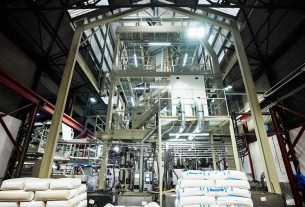Attributed to Ken Horne, Strategic Planning Manager, Software Defined Vehicle Solution, Keysight Technologies.
Vehicles produced today have varying levels of autonomy, with most cars having level two or two-plus features and some high-end cars having level three features. However, safety concerns regarding autonomous driving remain in the spotlight.
This is resulting in the acceptance of more incremental developments in advanced driver-assistance systems (ADAS) rather than pushing for full autonomy. ADAS uses automated technology, including sensors and cameras, to detect nearby obstacles or driver errors and respond accordingly, improving car and road safety. ADAS is increasingly viewed as a catalyst towards full autonomy, which is widely accepted as a long-term goal.
The transition to electric vehicles (EVs) is helping drive the adoption of software defined vehicle (SDV) architectures, as electric models frequently utilise these platforms. Integrating SDV capabilities with electric vehicles can help accelerate the penetration of both technologies in the market. However, traditional OEMs are struggling to implement software-defined vehicles while newer entrants have made progress.

One critical challenge to overcome is consumer acceptance of shifting from the established “pay once for the car” model to the subscription-based model which provides recurring software updates and new features. These software updates are necessary to ensure the reliability, safety, and security of the software-defined systems which will foster widespread adoption. For OEMs, the ability to add new features and capabilities to vehicles through over-the-air software updates presents opportunities to generate new recurring revenue streams while keeping vehicles up to date. The next few years will determine the impact of SDV on the auto industry.
Despite the initial hype around 5G, the auto industry has gradually embraced the wireless network. As 5G and then 6G become more ubiquitous, over-the-air software updates and the ability for vehicle features to be added post-production will become a reality. A telematics control unit will be essential to support these updates and services.
Mobility as a Service (MaaS), which integrates various transportation forms and services into an on-demand service, has long been touted as the future of transportation. After several false starts, the strategy has shifted to focus on deploying mobility-as-a-service models in simpler, grid-like cities like Phoenix, Milton Keynes, Vienna, Helsinki, and Singapore before expanding to more complex urban areas like San Francisco, London, Paris, Tokyo, Hong Kong. Extensive testing incorporating digital twins will be critical to the success of these initiatives.
AI will increasingly be used to tap into the vast volumes of data that vehicles now generate to improve the design and performance. However, until concerns around the safety and reliability of AI are addressed it will limit adoption. To help resolve these issues, car manufacturers will use AI to verify that the AI algorithms used in autonomous driving software are safe and trustworthy. This will give rise to the need for a squad of AI traffic cops to help police the auto industry’s use of AI.





